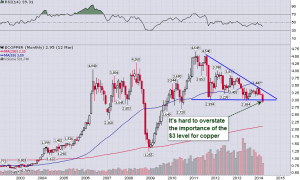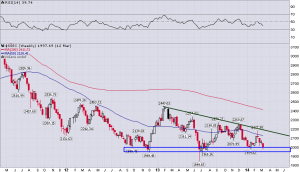Fairfax Holdings recent annual letter to shareholders offers many nuggets of wisdom including this excerpt on China (emphasis our own):
"In the last few years we have discussed the huge real estate bubble in China. In case you continue to be a skeptic, here are a few observations from Anne Stevenson Yang, an American who has been in China for over 20 years and is the founder of JCapital Research in Beijing:
1. China added 5.9 billion square metres of commercial buildings between 2008 and 2012 – the equivalent of more than 50 Manhattans – in just five years!
2. In 2012, China completed about 2 billion square metres of residential floor space – approximately 20 million units. For perspective, the U.S. at its peak built 2 million homes in a year.
3. At the end of 2013, China had about 6.6 billion square metres of new residential space under construction, around 60 million units.
4. Yinchuan, a city of 1.2 million people including the suburbs, has 30 million square metres of available apartments – roughly 300,000 units that could house 900,000 people. This is in addition to the delivered but unoccupied units. The city of Guiyang, capital of Guizhou Province, has roughly 5.5 million extra units for a city of 5 million.
5. In almost every city Anne has visited, pretty much the whole existing housing stock has been replicated and is empty.
6. Home ownership rates in China are estimated to be over 100% versus 65% in the U.S. Many cities report ownership over 200%. Tangshan, near Beijing, is one.
7. This real estate boom could only be financed through unrestrained credit growth. Since 2009, the Chinese banks have grown by the equivalent of the entire U.S. banking system or 15% of world GDP.
8. The real estate bubble has resulted in companies extensively borrowing and investing in real estate or lending on real estate in the shadow banking system. This is exactly what happened in Japan in the late 1980s.
9. And one observation of our own: Since 2009, the easing by the Federal Reserve combined with the explosive growth in China, backed by higher interest rates, has resulted in huge inflows (‘‘hot money’’) into China. The near unanimous view that the renminbi would strengthen has resulted in a massive carry trade where speculators have borrowed at low rates across the world and invested in China, almost always backed by real estate. The shadow banking system in China – i.e., assets not on the books of the major Chinese banks – is estimated by Bank of America Merrill Lynch to be approximately $4.7 trillion or 51% of Chinese GDP. Oddly enough, prior to the credit crisis, the U.S. had $4.5 trillion in asset-backed securities outstanding or approximately 31% of U.S. GDP. You know what happened then. When the flows reverse in China, watch out!"
The recent decline in copper might be a major shot across the bow that the Chinese real estate bubble and shadow banking ponzi finance game may be finally coming to an end:
The sharp bearish reversals in other economically sensitive commodities such as crude oil and iron ore add further confirmation that all is not well out there. The Shanghai composite also remains mired in a bear market as it flirts with major long-term support near 1950-2000:
China has clearly caught a cold, the question now becomes whether it will catch a flu......























